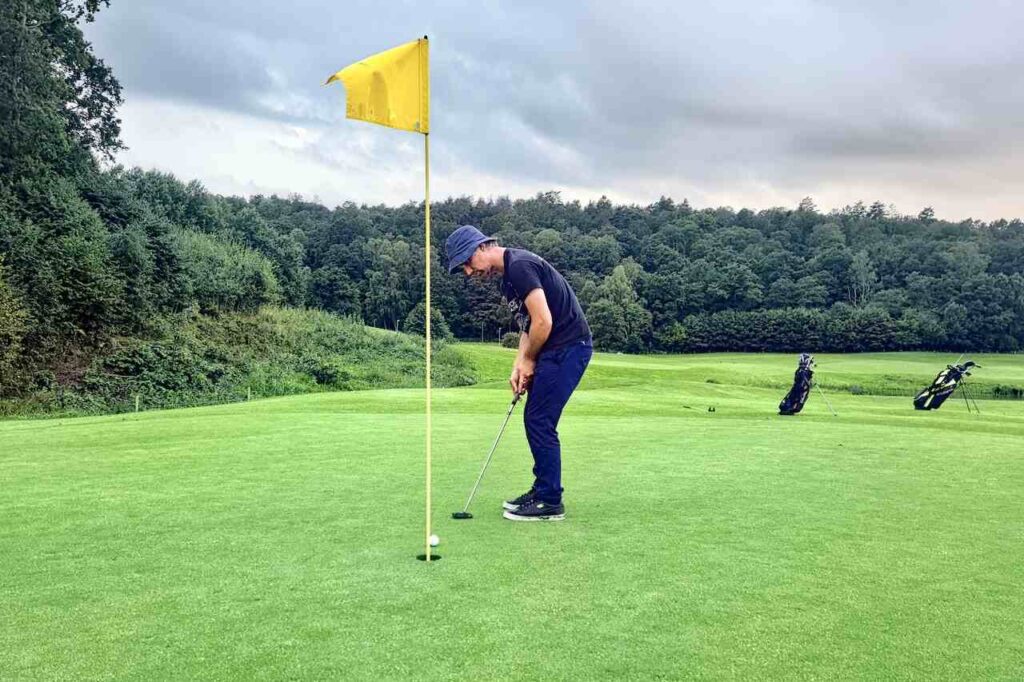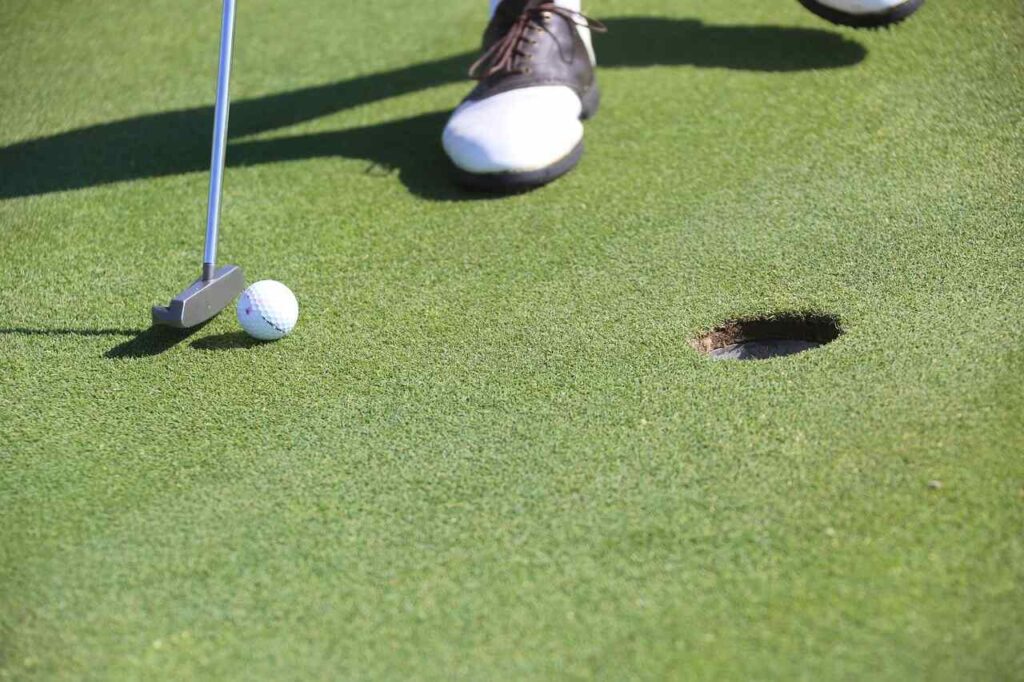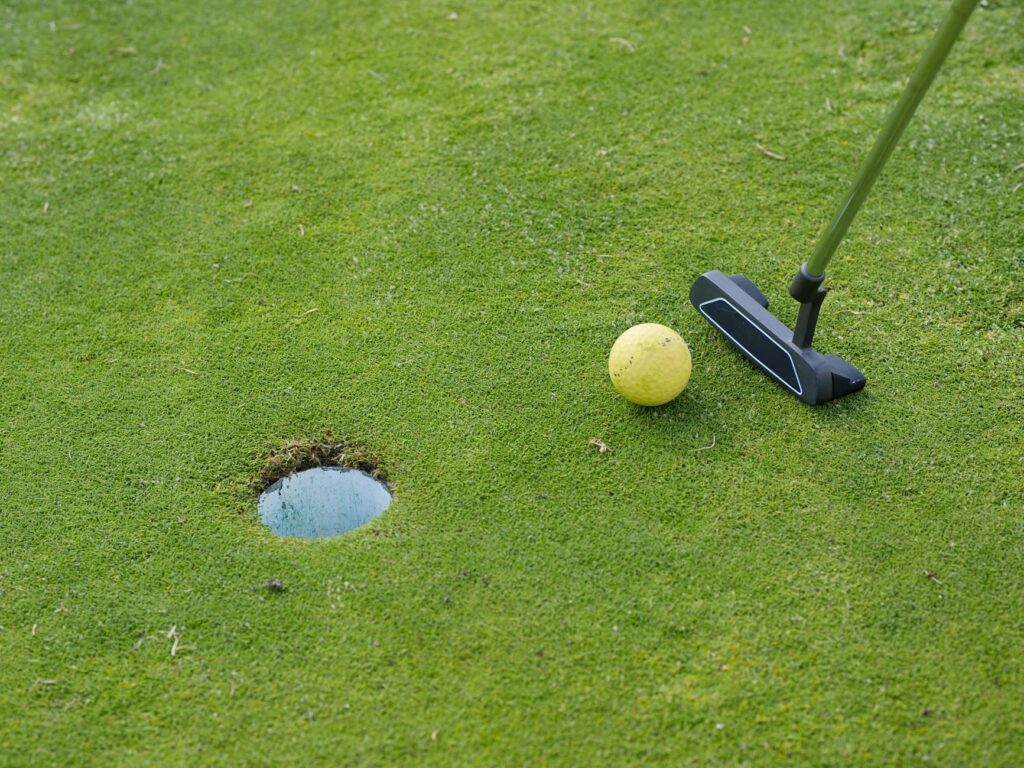Chipping Like a Champ in Golf
Golf: Master your short game technique for the weekend warrior! Are you hitting the course every Saturday morning but struggle to lower your score? It’s high time you focus on short game techniques and shift your focus from the driver to the wedge.
While long drives might force heads to turn around, applauding your performance, it’s short game – especially chipping – that makes or breaks your round. If you master this critical skill as a par, that can turn you into a birdie.
Curious to learn about effective chipping strategies or brush up on golf practice routines to help you ace the short game?
To truly embrace the art of chipping like a champ in golf, you need to incorporate essential techniques into your practice routine.
Why the Short Game Matters? Be honest with yourself, most non-professional golfers lose strokes around the green. Therefore, the golf weekend warrior, who doesn’t have time to polish their hitting skills, can focus on the short game.
This plays a vital role in offering a path to improve their efficiency. According to The New York Times, golf statistics show that around 60-65% of all golf shots occur within 100 yards of the hole, highlighting the necessity of short game proficiency in golf, as many shots are made within this range.
And the best part is yet to come: chipping doesn’t require you to spend hours on the range. So, you can improve your results with a few fundamentals and short practice sessions.
Table of Contents
Chipping vs. Pitching in Golf
Before heading into the short game techniques, you must understand how chipping and pitching differ:
Chipping: It’s a short, low shot that flies briefly and rolls toward the hole.
For most weekend golfers, refining their chip shot is the quickest way to reduce the number of strokes it takes to complete a round.
Pitching: It’s a higher shot that spends more time in the air and stops quickly.
For most weekend golfers, refining their chip shot is the quickest way to reduce the number of strokes it takes to complete a round. The following are the basic principles that can form the foundation of your solid chipping game:
Keep Your Stance Narrow
Keep your stance narrow, as that helps you balance and control your game, which are viewed as primary elements for consistent chipping. Simply stand with your feet about shoulder-width apart.
Put Your Weight Forward
Put 60 to 70% of your weight on your left foot in case you are a righty. This encourages clean contact and assists in avoiding hitting the ground shot, which gives you an even shot.
Position the Ball
Play the ball closer to your trailing foot, slightly back in your stance. This promises a downward strike and prevents errors while swinging.
Hands Ahead
Your hands should be kept a little ahead of the ball at address, and maintain that angle through your hit. This motivates a descending blow and precise contact.
The Simpler the Better
Keep your hit simple. Use a putting-like movement with minimum wrist hinge. Concentrate on a seamless, controlled tempo rather than attempting to “lift” the ball.
Pick the correct Golf Club
In your golf community, plenty of weekend warriors will try to chip with their lob wedge, regardless of the situation. But if you want to secure the title of a distinct weekend warrior, use multiple clubs like a pitching wedge, 9-iron, or even a 7-iron to simplify the shot and witness an improvement in your results.
The rule is:
- Use a lower lofted club to increase the roll of the ball
- Use a higher lofted wedge if you need more carry.
After getting comfortable, experiment with other clubs to know what works best for you around the greens.



3 Go-To Golf Chipping Techniques for Weekend Warriors
The Bump and Run
The Bump and Run is the most reliable chipping shot for freshers. You can use a low-lofted club or a 7 or 8-iron, keep the ball in your stance, and aim for a smooth, putting-like stroke.
The One-Hop Stop
This technique should be adopted when you need to carry the ball over a rough fringe, but want it to stop quickly. Grab a sand or lob wedge, as that works well, open your stance a bit, and make a steeper swing. You will let the club’s bounce and loft work for you.
The Hybrid Chip
If you are practising on a thick, rough patch near the green, proceed with a hybrid chip. Grip down, use a putting stroke, and let the hybrid move through the grass for clean contact.
Some Practice Drills to Master the Short Game in Golf
To practice chipping, there is no demand for a full range; you can make the most out of the following drills to master the short game in your backyard, living room, or nearby club, too:
The Towel Drill
You might find this one amusing, but it is helpful. Put a towel at a little distance in front of you. Try to hit so that the chips land on that towel. You will learn to control distance and dial in your landing area.
Circle the Hole
Mark a 10-yard radius, circle the hole with balls. Chip each one toward the hole, and ensure you are left with a 3-foot circle. This offers you a feeling of actual course conditions.
One Club Challenge
No need for frequently changing clubs, use just one for different chips. Practice your short game by hitting high, low, and medium to boost your feeling and creativity.
Avoid These Common Chipping Mistakes
Don’t worry, even the most experienced weekend warriors make these chipping mistakes, so as an expert weekend warrior, avoid the following:
Scooping the Ball
Attempting to lift the ball results in thin shots. Trust the loft and hit a downward strike.
Decelerating Through Impact
Commit your stance to the stroke as a smooth follow-through is key to consistency.
Wrong Golf Club for The Shot
Avoid limiting yourself to the lob wedge. Instead, opt for the club based on the lie, distance to the hole, and green speed.
Conclusion
With these short game techniques, you can chip like a champ and maybe inspire others and a true weekend warrior. Apart from this, if you want to read more golf tips, subscribe to Golf Inquirer and improve your game. Remember, practice these techniques regularly to truly master the art of Chipping like a champ in golf.
FAQ’s
When chipping, what is the primary goal regarding ball flight and roll?
The primary goal when chipping is to get the ball to fly a short distance onto the green and then roll the majority of the way towards the hole, similar to a putt. This is often referred to as “fly it low, let it roll.”
When executing a chip shot, what part of the clubface should ideally strike the ball, and why?
Ideally, the center of the clubface should strike the ball. This ensures the most efficient transfer of energy, leading to a consistent ball flight and predictable roll. Striking off-center (toe or heel) can cause the ball to go off-line or have an inconsistent trajectory and distance.
What is the “read” of a putt, and why is it crucial?
The “read” of a putt refers to understanding the slope, grain, and speed of the green to predict how the ball will break and how much force is needed. It’s crucial because an accurate read allows you to aim correctly and apply the appropriate power, significantly increasing your chances of making the putt.
What is one more common practice drill for improving putting distance control?
Another common practice drill for improving putting distance control is the “ladder drill.” This involves placing several balls at increasing distances from the hole (e.g., 5 feet, 10 feet, 15 feet, 20 feet) and attempting to putt each one to the hole, focusing on the appropriate speed for each distance. Alternatively, putting to a target without a hole, like a specific spot on the green, can also help develop feel for distance.



